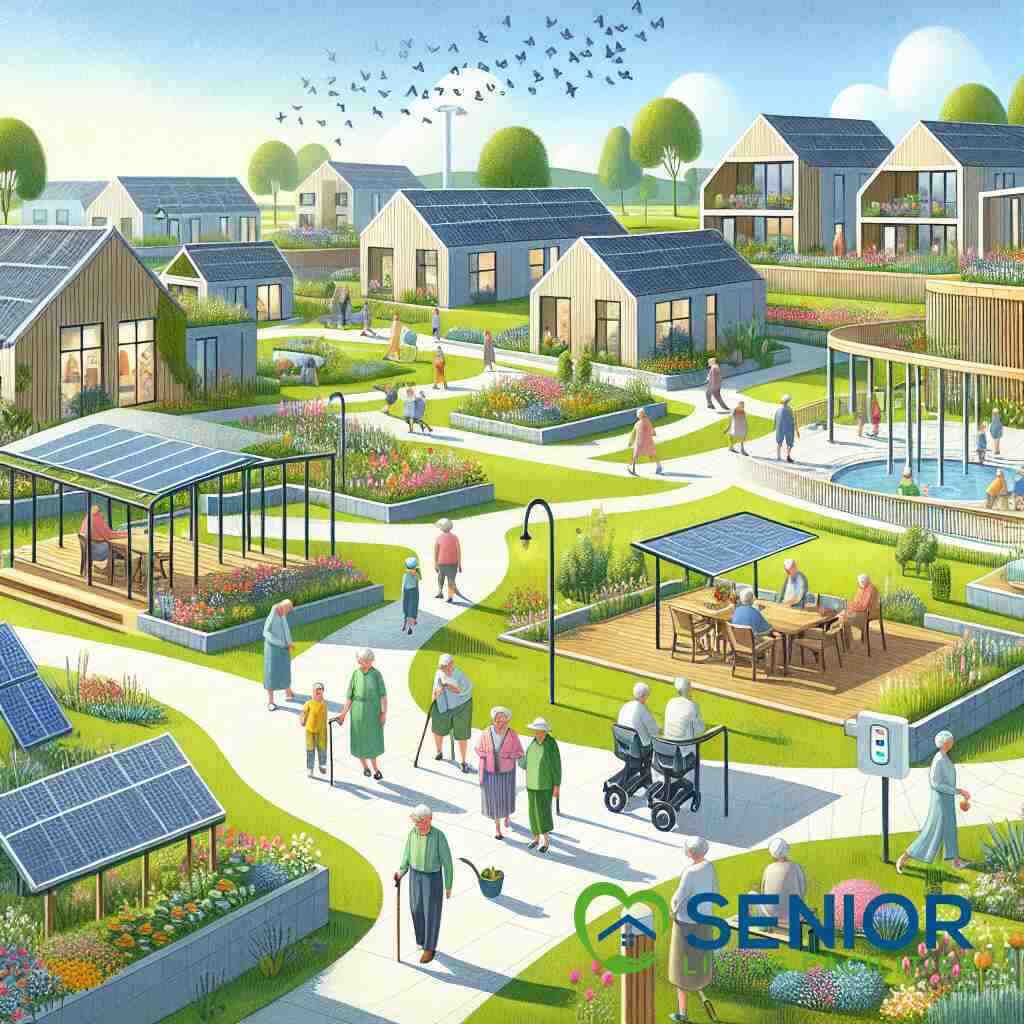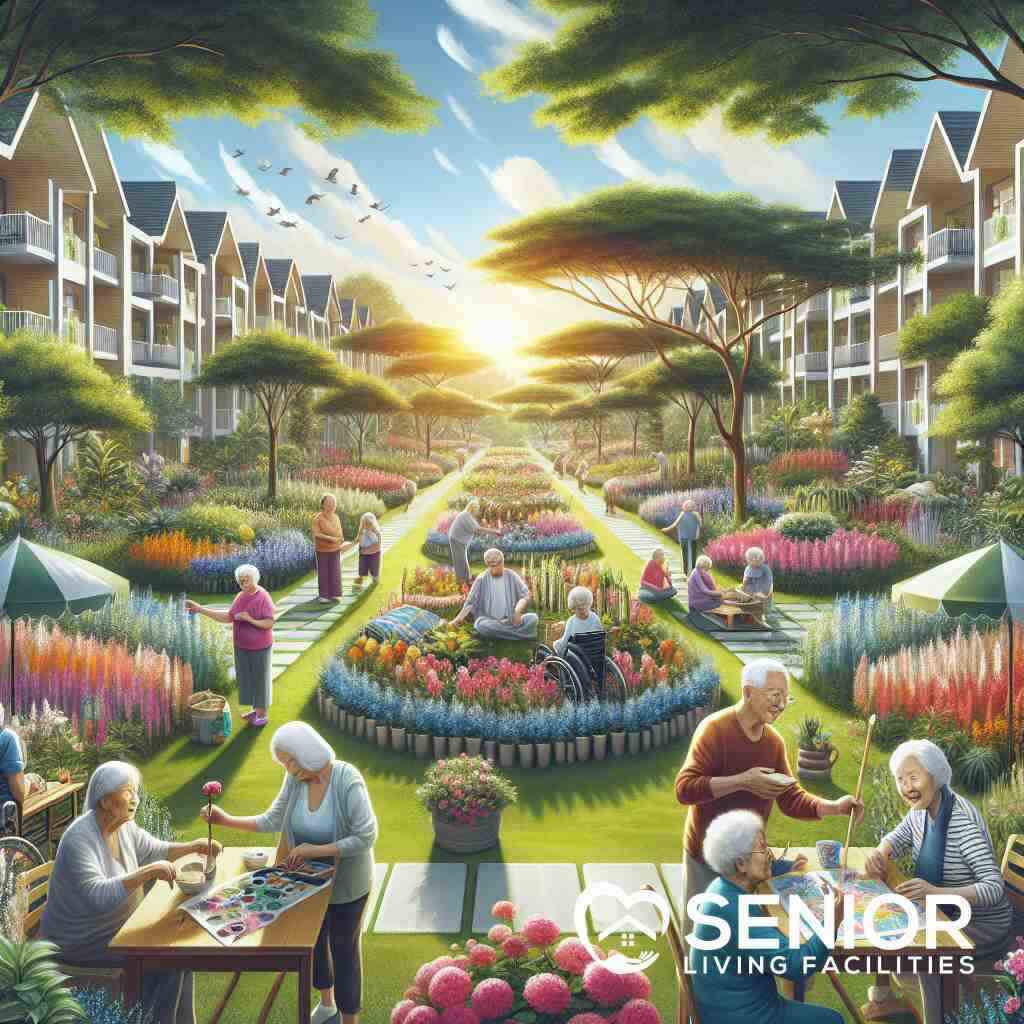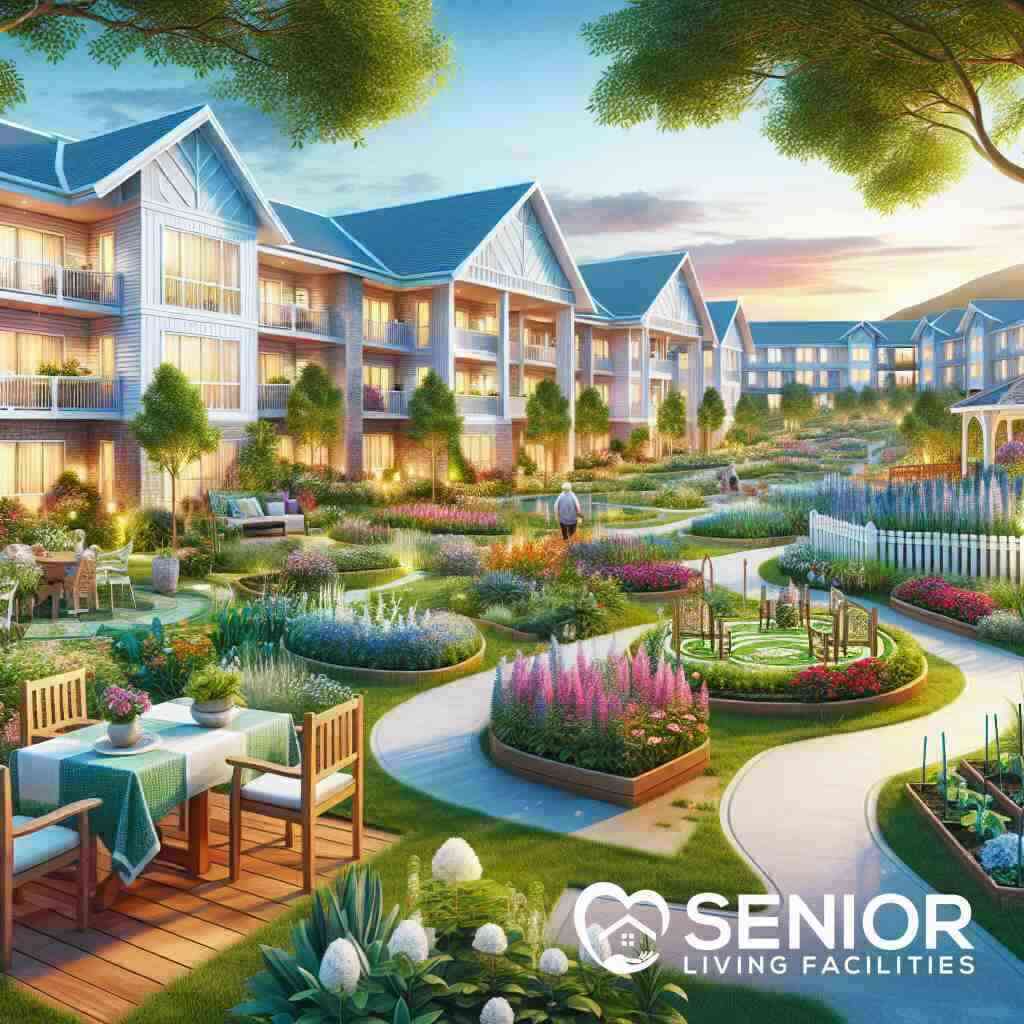
The Difference Between Urban and Rural Senior Living Facilities
November 20, 2024
Introduction: The Tapestry of Senior Living Choices
Understanding Senior Living Facilities
Senior living facilities encompass a diverse spectrum of housing and care options tailored to the needs of older adults. These communities are designed to provide varying levels of assistance, from independent living, where seniors manage their daily routines, to assisted living, where day-to-day support is more pronounced. An essential factor in this decision-making process is understanding what defines senior living communities, a concept that differs from traditional perceptions of elderly care. As these facilities cater to personal preferences and health requirements, they aim to foster a sense of belonging and community engagement for seniors.
The Urban vs Rural Debate in Senior Housing
The choice between urban and rural senior housing reflects a broader debate about lifestyle preferences and resources available. Urban senior living often means access to well-developed infrastructure and vibrant community opportunities, whereas rural settings may offer tranquility and closeness to nature. This urban vs rural senior housing comparison is crucial for potential residents to make informed choices that align with their personal and lifestyle needs. Both options have their intrinsic merits and challenges, presenting a unique puzzle for those seeking the perfect place to retire.
Why Location Matters
Location plays an instrumental role in the decision-making process for seniors exploring living facilities. The geographical setting influences lifestyle, healthcare accessibility, and social opportunities, all integral components of quality senior care. As one considers unique locations for senior living, factors like local climate, community size, and proximity to family become pivotal. The impact of location on senior housing can determine not only the cost but also the overall satisfaction and well-being of the residents. As such, assessing these parameters becomes a key consideration in selecting a suitable senior living environment.
The Dynamics of Urban Senior Living
Cost of Senior Living in Cities
Urban senior living often presents a higher price tag compared to rural alternatives. This increase in cost is largely due to the premium location, access to extensive amenities, and sophisticated infrastructure that cities offer. Many seniors and their families must weigh these costs against the convenience and lifestyle urban living provides. Evaluating the financial requirements against the potential for vibrant community life and enhanced healthcare services is crucial. It’s worth noting that while urban settings may be pricier, they often come with superior services that justify the cost.
Amenities in Urban Senior Facilities
Urban senior living facilities boast a wide array of amenities designed to enhance the quality of life for their residents. From state-of-the-art fitness centers and swimming pools to on-site healthcare services and gourmet dining options, urban facilities cater to diverse needs and preferences. These facilities also frequently offer cultural and educational programs that foster lifelong learning and engagement. When choosing among urban senior living options, travelers should assess the available amenities and consider how they align with individual lifestyle goals and hobbies, ensuring a fulfilling experience in their golden years.
Urban Senior Facility Benefits
The advantages of urban senior facilities extend beyond amenities. These communities offer streamlined accessibility to various services, from shopping and dining to healthcare and entertainment. Transportation networks in urban areas simplify mobility, reducing the constraints often found in more secluded settings. The proximity to family and friends in cities is another benefit that influences the decision towards urban residences. Living in a city can also provide seniors with the opportunity to engage with younger generations, promoting an intergenerational community that enriches the lives of its residents.
Social Opportunities for Seniors in Urban Areas
Cities pulsate with life, offering a multitude of social opportunities for seniors. Cultural events, community centers, and specialized senior clubs create venues for social interaction and foster new friendships. Urban areas typically offer greater ethnic and cultural diversity, providing residents with a chance to engage with various traditions and perspectives, which can enrich their own social experiences. Many urban facilities organize excursions and events, encouraging seniors to explore and connect beyond the confines of their community. Thus, the urban landscape becomes a playground of possibilities for active and friendly seniors.
Active Senior Living in Cityscapes
Living actively in urban environments is an achievable goal for many seniors. With parks, walking trails, and recreational activities, cities offer numerous venues for maintaining physical fitness and enjoying leisure time. Some urban environments emphasize age-friendly designs, promoting accessibility and safety for senior pedestrians. City living encourages physical activity, whether through daily walks or structured activities offered by senior communities. This setting supports an active lifestyle, which is crucial for maintaining health and wellness in later years. With the cities’ vibrant energy, seniors can pursue an active lifestyle that blends seamlessly with urban life’s dynamic nature.
Exploring Rural Senior Living Centers

Cost of Rural Senior Living
Rural senior living often emerges as a more cost-effective option compared to urban alternatives. This affordability is primarily due to lower land and operational costs in rural areas. For many families, the reduced financial burden makes rural living an attractive option when planning long-term care. Smaller, close-knit communities often prioritize essential services over luxury amenities, creating a no-frills environment that aligns with budget-conscious planning. Those considering the cost of rural senior living must weigh these financial benefits against the potential limitations in amenities and services typically found in rural settings.
Access to Nature in Rural Senior Living
Rural senior living centers frequently offer unparalleled access to the natural world. Wide-open spaces, scenic landscapes, and the tranquility of nature provide seniors with an environment that promotes relaxation and mental well-being. Many facilities incorporate nature trails, gardens, and outdoor activities, fostering a deeper connection with the surrounding ecosystem. Studies indicate that regular interaction with nature can enhance the cognitive and emotional health of seniors. Therefore, the opportunity for immersive natural experiences is a significant draw for those considering rural senior living options.
Quiet and Peaceful Living for Seniors
Seniors seeking a quiet, peaceful existence often find rural settings ideal. Away from the hustle and bustle of city life, rural senior living facilities typically exude a calm atmosphere conducive to stress-free living. The serene environment allows residents to enjoy a slower pace of life, promoting mindfulness and contemplation. Such tranquility is particularly beneficial for those managing age-related stressors, as it encourages both physical and emotional healing. Thus, the peace of rural living aligns well with the lifestyle preferences of many seniors seeking respite in their twilight years.
Navigating Senior Isolation in Rural Areas
Isolation can be a challenge in rural senior living, as geographical remoteness sometimes limits social interaction. Facilities combating this issue often develop robust community programs aimed at fostering social engagement. Activities are designed to bring residents together, ensuring that companionship and community spirit remain integral to daily life. While challenges in rural senior living are real, many communities actively work to create supportive environments where seniors feel connected and valued. Thus, addressing isolation requires innovative and intentional structuring of community initiatives.
Transportation Options for Seniors in Rural Settings
Transportation in rural senior settings demands careful consideration due to limited public transportation infrastructure. Many facilities offer shuttle services or coordinated transportation to ensure residents access essential services and social activities. This logistic support is vital for maintaining independence and mobility among seniors who no longer drive. Additionally, community partnerships with local organizations often provide supplementary transport solutions. By prioritizing accessible transportation, rural senior living centers strive to remove potential barriers to an active and engaged lifestyle, ensuring residents maintain connections with the broader community.
Key Factors Influencing Senior Living Decisions
Quality Of Life for Seniors
Quality of life remains a crucial factor when choosing a senior living facility. Daily routines, personal freedom, and environmental comfort significantly impact the overall satisfaction of senior residents. Facilities must offer enriching activities and opportunities to foster a sense of community engagement and purpose. Both urban and rural senior living facilities strive to enhance life quality, albeit in distinct ways. While urban facilities may focus on offering diverse amenities and vibrant social scenes, rural facilities emphasize tranquility and close-knit community bonds. Senior Living Amenities That Matter Most in 2024 Therefore, understanding urban vs rural senior communities helps potential residents evaluate which environment aligns best with their lifestyle and preferences.
Healthcare Access in Senior Communities
Healthcare access is paramount in senior living decisions. Urban senior facilities generally boast extensive healthcare networks with proximity to hospitals, specialists, and emergency services. This accessibility ensures prompt medical attention, a critical consideration for those requiring frequent care. Conversely, rural senior living may offer fewer on-site healthcare options but often compensates with partnerships with local healthcare providers to meet essential needs. Placement decision-makers must weigh these differences, considering the specific medical requirements of the senior in question. Ultimately, ensuring comprehensive healthcare services forms a cornerstone of every well-rounded senior living facility and influences overall resident satisfaction.
Social and Cultural Activities for Seniors
Engagement in social and cultural activities is vital for enhancing senior wellness and minimizing isolation risks. Urban senior communities typically provide a plethora of opportunities, including arts programs, theater, clubs, and local excursions, thanks to readily available local resources and cultural diversity. In contrast, rural settings might focus on community-centered events, fostering a strong sense of camaraderie and tradition among residents. Facilities that emphasize cultural activities for seniors tend to see higher levels of resident satisfaction. Choosing between these options involves prioritizing the type of social interaction and community involvement that best suits the senior’s personal interests and lifestyle desires.
Safety Considerations: Urban vs Rural
Safety is a critical concern when selecting a senior living facility, with distinct factors affecting urban and rural environments. Urban senior living facilities often have advanced security measures and are situated in well-policed areas, offering reassurance against urban crime. However, the hustle and bustle of city life can pose risks, particularly regarding mobility and transportation. Rural facilities generally have lower crime rates, contributing to a sense of security, albeit sometimes at the expense of slower emergency response times. When considering safety in senior living environments, prospective residents must evaluate their comfort levels and safety concerns relative to the offered security features of each setting.
Proximity of Family in Senior Living
Proximity to family plays a significant role in the decision-making process for senior living arrangements. Seniors often wish to maintain close contact with family members, who provide emotional and logistical support. Urban facilities usually offer the advantage of proximity, making visits more convenient and frequent due to better transportation infrastructure. Navigating Senior Living Options Near Me for 2024 Meanwhile, rural facilities might pose challenges for regular family visits due to distance and accessibility issues. Determining the importance of family closeness involves balancing emotional ties with pragmatic considerations of travel and convenience. This factor influences not only the senior’s happiness but also the family’s involvement in their loved one’s daily life and well-being. Carefully assessing both urban and rural senior living options helps ensure that the chosen environment meets the family’s needs and expectations.
Conclusion: Tailoring the Perfect Senior Living Experience
Personalizing Senior Housing Choices
Choosing a senior living facility requires careful consideration of personal preferences and lifestyle aspirations. Best Practices for Senior Living Facility Selection Seniors, along with their families, must assess factors such as geographic location, level of care, and community culture to ensure an optimal fit. Personalizing these choices is vital, as it transforms senior living from a mere residence into a home that resonates with the individual’s unique needs and desires. Ultimate Guide to Assisted Living Benefits Near You Key elements like daily activities, dietary preferences, and social interaction frequency should align with the senior’s personality and health requirements. Facilities offering diverse senior living options near you provide an excellent starting point for identifying the ideal match.
Balancing Lifestyle and Practical Needs
Achieving harmony between lifestyle preferences and practical necessities is fundamental in selecting the right senior living facility. What to Look for in Senior Living Facilities in NY? Seniors may dream of a vibrant community bustling with activities or a serene retreat close to nature. Still, these interests should be balanced with practical considerations such as healthcare accessibility, transportation, and cost. Urban settings often offer numerous amenities and health services, ideal for those prioritizing convenience and connectivity. The Best Fitness Programs in Senior Living Communities Conversely, rural areas may appeal to those seeking tranquility and a closer bond with nature. Understanding the financial implications and evaluating long-term feasibility is equally important, as well as ensuring that the chosen environment is sustainable and supportive of evolving needs.
Embracing Community Engagement for Seniors
Community engagement is a cornerstone of enriched senior living, fostering a sense of belonging and purpose among residents. Facilities that emphasize social and cultural activities help seniors maintain lively interactions, building relationships that enhance overall well-being. Engaging in community events, clubs, and volunteer opportunities enables seniors to contribute their wisdom and skills, enriching the lives of others while nurturing their emotional health. As seniors evaluate potential living environments, they should consider the breadth and depth of community engagement opportunities offered, ensuring their new home provides not just shelter but a vibrant, interactive community where they can thrive.
Frequently Asked Questions
Question: What are the primary differences in lifestyle between urban senior living and rural senior living facilities?
Answer: Urban senior living facilities offer a lifestyle rich with amenities and social opportunities, such as cultural events, educational programs, and diverse dining options. These facilities benefit from being located in vibrant cityscapes with enhanced infrastructure, making access to healthcare, shopping, and entertainment convenient. In contrast, rural senior living facilities emphasize peace and tranquility, providing a serene environment close to nature. They often promote community bonds and quiet living, ideal for seniors who appreciate a calm and slower pace of life. The Best Senior Living Facilities in Ohio for 2024 Both have unique advantages tailored to individual lifestyle preferences. Top 5 Senior Living Communities in California
Question: How does the cost of living in urban senior facilities compare to rural ones, according to the insights from the blog post “The Difference Between Urban and Rural Senior Living Facilities”?
Answer: The blog post highlights that urban senior living facilities generally have a higher cost due to their strategic location and the extensive amenities they provide. These often include top-notch healthcare access, transportation networks, and cultural activities. Meanwhile, rural senior living tends to be more cost-effective, attributed to lower operational expenses and land costs. Compare: Assisted Living vs Home Care in 2024. However, this usually comes with fewer amenities. Families must balance these financial considerations with lifestyle preferences and the specific needs of their loved ones. Compare Assisted Living and Home Care Services
Question: How does healthcare access differ between urban and rural senior living facilities, and what solutions are offered to ensure comprehensive care?
Answer: Urban senior living facilities typically boast superior healthcare access thanks to their proximity to numerous hospitals and specialist clinics, which guarantee prompt medical attention. Conversely, rural facilities might have limited immediate healthcare services but often build partnerships with local healthcare providers to meet essential needs. At Senior Living Facilities, we understand this distinction deeply and prioritize ensuring that every senior has comprehensive healthcare services available, whether choosing urban conveniences or rural partnerships.
Question: How do urban and rural senior living facilities address social interaction and combat isolation?
Answer: Urban senior living settings provide numerous social opportunities through cultural and community events, benefiting from the city’s diversity and activities. The Importance of Social Activities in Senior Living These include clubs, excursions, and active community engagement options. Rural facilities, while potentially more isolated geographically, emphasize community-centered activities to foster connection and lessen isolation. At Senior Living Facilities, we ensure that both urban and rural senior communities create supportive environments with activities tailored to promote social interaction, combating isolation while enhancing quality of life. Exploring How Geographic Location Affects Senior Living
Question: How do “Senior Living Facilities” assist families in finding suitable senior living options between urban and rural environments?
Answer: Senior Living Facilities offers an extensive database covering communities throughout the US, enabling users to compare urban and rural senior living options based on location, amenities, medical services, and lifestyle preferences. Our platform provides detailed comparisons and direct connections to facilities, ensuring families find the ideal community tailored to their senior’s personal needs, whether urban convenience or rural peace is desired. We strive to facilitate a seamless experience, supporting families in making informed decisions that prioritize care, satisfaction, and happiness for their loved ones. Ultimate Guide: Aging in Place vs Senior Communities



